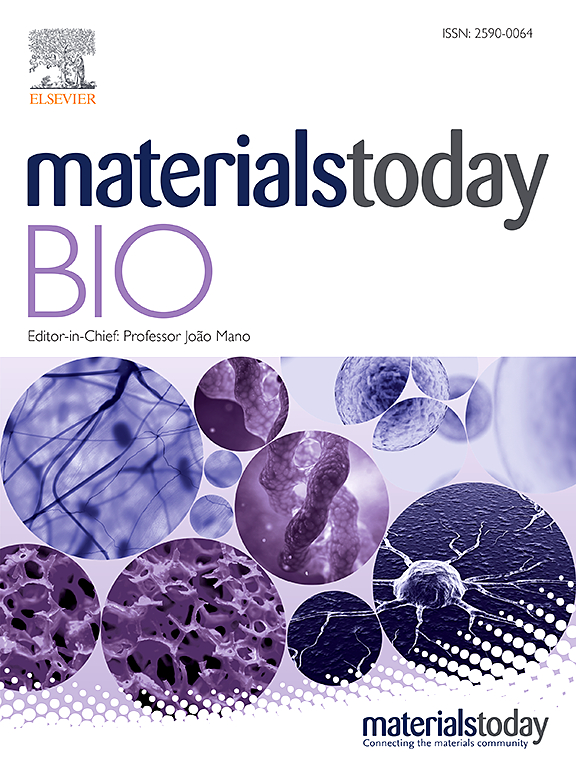Conductive MeCbl/PEDOT:PSS/HA hydrogels with electrical stimulation for enhanced peripheral nerve regeneration
IF 8.7
1区 医学
Q1 ENGINEERING, BIOMEDICAL
引用次数: 0
Abstract
Peripheral nerve regeneration (PNR) represents a substantial challenge in the medical field, primarily due to the limited regenerative capacity of the peripheral nerve system (PNS). Current research efforts are focused on developing advanced medical polymer materials to enhance nerve recovery. Despite significant progress, several critical issues remain unresolved, including biocompatibility, stability, mechanical strength, controlled degradation rates, and sustained release of therapeutic agents. This study examines the utilization of hyaluronic acid hydrogels, doped with mecobalamin (MeCbl) and conductive poly(3,4-ethylenedioxythiophene):polystyrene sulfonate (PEDOT:PSS), in combination with exogenous electrical stimulation (ES) for PNR of rats. The strategy utilizes the MeCbl hydrogel to create a regenerative microenvironment and provide nutritional support for nerve cells, while PEDOT:PSS facilitates enhanced electrical signal conduction. ES has been shown to promote PNR and functional recovery, thereby demonstrating considerable potential. This study aims to comprehensively analyze the synergistic effects and potential value of this combined therapeutic approach, providing novel insights and pathways for the effective PNR.

求助全文
约1分钟内获得全文
求助全文
来源期刊

Materials Today Bio
Multiple-
CiteScore
8.30
自引率
4.90%
发文量
303
审稿时长
30 days
期刊介绍:
Materials Today Bio is a multidisciplinary journal that specializes in the intersection between biology and materials science, chemistry, physics, engineering, and medicine. It covers various aspects such as the design and assembly of new structures, their interaction with biological systems, functionalization, bioimaging, therapies, and diagnostics in healthcare. The journal aims to showcase the most significant advancements and discoveries in this field. As part of the Materials Today family, Materials Today Bio provides rigorous peer review, quick decision-making, and high visibility for authors. It is indexed in Scopus, PubMed Central, Emerging Sources, Citation Index (ESCI), and Directory of Open Access Journals (DOAJ).
 求助内容:
求助内容: 应助结果提醒方式:
应助结果提醒方式:


